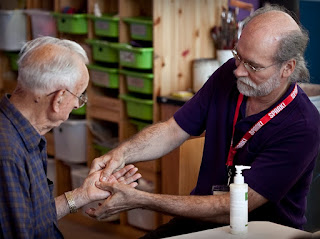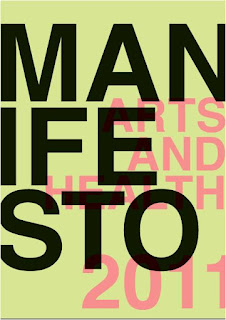‘Fiction and poetry are doses, medicines. What they heal is the rupture reality makes on the imagination.’ Jeanette Winterson
Looking through the newspapers over the last few days, I’ve been overwhelmed by the usual round up of ‘highlights’ of 2011: successes, failures, deaths and revelations. I’m still surprised how little is reported on the on-going crisis resulting from the tsunami in Japan in March.
How is the health and well-being of the displaced people around Fukushima, now that the Japanese government has increased the levels of radiation it is permissible and ‘safe’ for its citizens to be exposed to? Although barely noticeable in the printed media in the UK, counterpunch have provided some compelling detail, exposing the very real and enduring plight of people in Japan. What is particularly poignant, is the focus on women's voices, reminiscent of Greenham Common in the early 80’s, when 30,000 women held hands and formed a human fence around nine miles of the US nuclear missile base, and sung They Shall Not Pass.
The women of Japan sing a traditional song of remembrance and longing, Furosato:
How is the health and well-being of the displaced people around Fukushima, now that the Japanese government has increased the levels of radiation it is permissible and ‘safe’ for its citizens to be exposed to? Although barely noticeable in the printed media in the UK, counterpunch have provided some compelling detail, exposing the very real and enduring plight of people in Japan. What is particularly poignant, is the focus on women's voices, reminiscent of Greenham Common in the early 80’s, when 30,000 women held hands and formed a human fence around nine miles of the US nuclear missile base, and sung They Shall Not Pass.
The women of Japan sing a traditional song of remembrance and longing, Furosato:
Someday when I have done what I set out to do,
I will return to where I used to have my home.
Lush and green are the mountains of my homeland.
Pure and clear is the water of my old country home.
This year has also seen societal unrest on a scale unseen in a generation. Whilst focus in the UK media has been on the ‘Arab Spring’ and the unfolding crisis in Syria, the voices of school girls unbalanced the political system across Chile, resulting in a number of government resignations and questioning wider social inequalities. The voices of the young women of Chile cannot be ignored.
Closer to home, and less apparently sensational, the small print in the Guardian on 30th December revealed that antidepressant use in the England has risen by more than a quarter over the last 3 years. Prescriptions for anti-depressants rose from 34m in 2007/08 to 43.4m in 2010/11: an increase of 28%. Furthermore, in the North West we have the highest antidepressant use over 2010/11, with 7.2m prescriptions dispensed.
I have no doubt at all, that antidepressants offer critical respite from serious and debilitating depression, but we mustn't lose sight of some of the factors that impact on our mental health, and the current economic crisis plays a real part in this. Whilst counselling and talking therapies can help turn lives around, it is significant that as the government have increased their support for Cognitive Behavioral Therapy, this apparent treatment of choice is both time-limited and ‘measured’ in part, by the individuals’ ability to find employment/return to work. And we’re told that depression is costing the economy almost £11bn a year. I seem to remember the wonderful Dorothy Rowe telling the Un-Conference here at MMU in October, that guilt, blame and shame are all part of that complex baggage that erodes our well-being and can cause depression. (see Greenberg in recommended books for the big picture)
Doesn’t it seem like we’re in some horrible muddle, measuring our well-being...measuring our ‘happiness’ ad infinitum. The writer Jeanette Winterson sums it up perfectly, ‘...when money becomes the core value, then education drives towards utility...the life of the mind will not be counted as a good unless it produces measurable results.’
In her autobiography, Why Be Happy When You Could Be Normal? Jeanette Winterson paints a picture of her life, originally fictionalised in Oranges Are Not The Only Fruit. It’s an enthralling read and one that I won’t spoil, but one in which we are given some very strong ideas about the potential impact of the arts on our well-being, and how as ‘meaning-seeking creatures’ in an increasingly secular world, we need to find ‘new ways of finding meaning.’ She also succeeds in blowing the myth, that poetry and prose are luxuries for the educated middle classes, suggesting ‘a tough life needs a tough language - and that is what poetry is. That is what literature offers - a language powerful enough to say how it is.’
In his report to HM Treasury, didn’t Derek Wanless suggest that evidence showed that one of the strongest determinants of health impact, wasn’t in fact, the reach of health services, but the female literacy rate?
In his report to HM Treasury, didn’t Derek Wanless suggest that evidence showed that one of the strongest determinants of health impact, wasn’t in fact, the reach of health services, but the female literacy rate?
I wonder how the people of Japan will describe this experience of being; will the actions of the young women of Chile go down in song, and how will we make sense of the here-and-now on our increasingly depressed little island? C.P
Thanks to Dr Nick Shimmin for sharing counterpunch; Professor Chris Williams of Pace University for his essay; the inspirational young people of Chile and Jeanette Winterson.









































